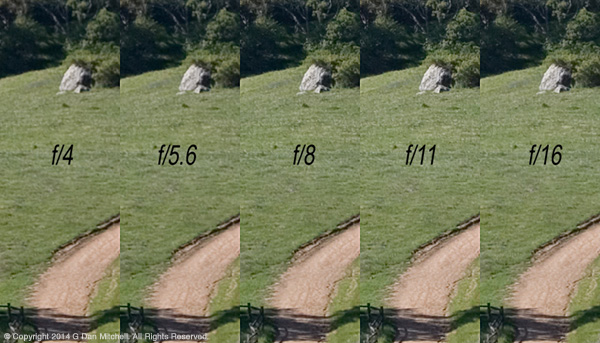… and the EF 100-400mm f/4.5-5.6L IS II lens.
A few days ago I spent four days in the high Sierra making photographs. At the end of one evening I made a photograph that isn’t intended to have any particular aesthetic value, but which was intended as a test of something about my new camera, a Canon EOS 5Ds R.* So I pointed it up at the top of this nearby granite dome just as the last light washed over its summit.
The technical information about the photograph:
- Canon EOS 5Ds R
- EF 100-400mm f/4.5-5.6L IS II lens at 400mm
- ISO 100
- 1/30 second
- f/8
- Manual focus using live view
First, the resulting photograph — which is, I will be the first to admit, not a stunning example of photographic art!
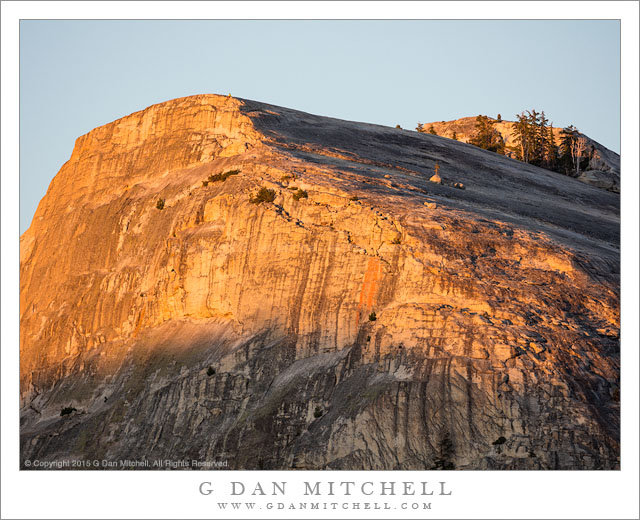
Next a crop from the same photograph showing a little surprise at the edge of the precipice. This is the same photograph, but this time a 100% magnification crop of a 600 x 450 pixel section. (You’ll have to click on the photos to see the 600 x 450 versions, since the design of this website slightly downsizes photos posted at that size.)
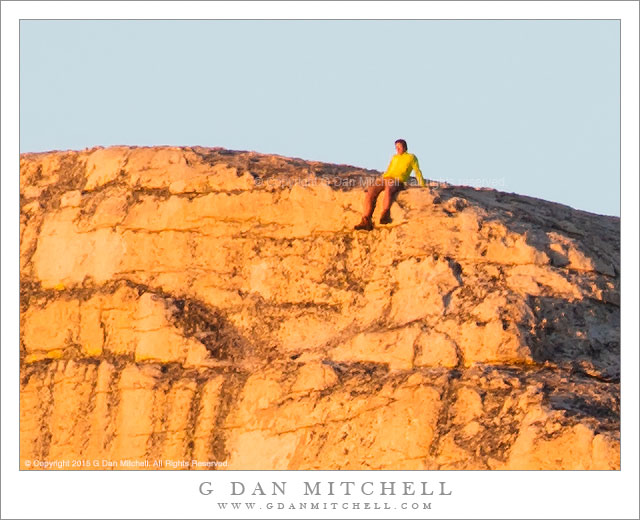
If you are wondering where this guy is in the full image, he is just below the right summit of the peak, slightly to the left of the start of the large shadow.
I’ll share some other examples later that are better optimized to show the resolution potential of this camera — photographs using something closer to the diffraction-limited aperture, focal lengths not at the extreme long end, with a lens that has even better resolution potential, and with a subject that is not so far away. (The distance introduces atmospheric elements that reduce resolution.)
Not bad, I’d say.
Added later: Someone asked how the 5Ds R handles the fine details of feathers. I’m sorry to say that I have not photographed birds yet — that is more of winter thing for me. However, while making landscape photographs this past week, deer wandered into several of my scenes and I went ahead and photographed them. The following 100% magnification crop (actual pixel size) was also made using the EOS 100-400 f/4.5-5.6L IS II at 400mm, f/5.6, IS and AF on, ISO 100. The critter was in shadow, and exposure has been pushed here roughly a full stop. (Click the image to see the original 600 x 450 pixel image — the version on this page is slightly downsized.)
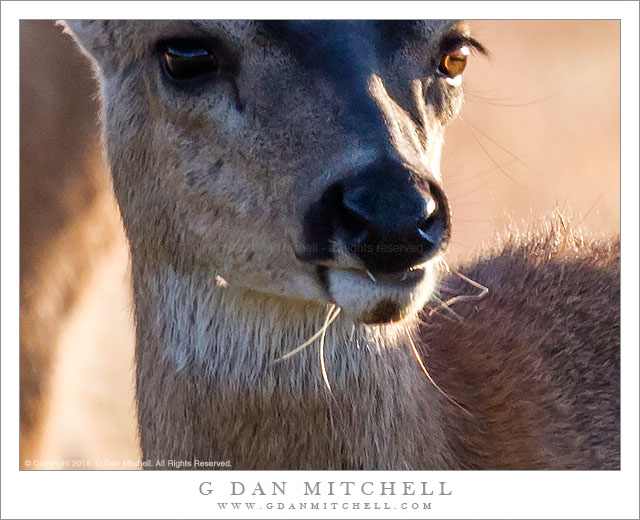
And one more example, also a 100% magnification crop: Canon EOS 5Ds R, ISO 100, 1/13 second, f/8, EF 100-400mm f/4.5-5.6L IS II @ 105mm
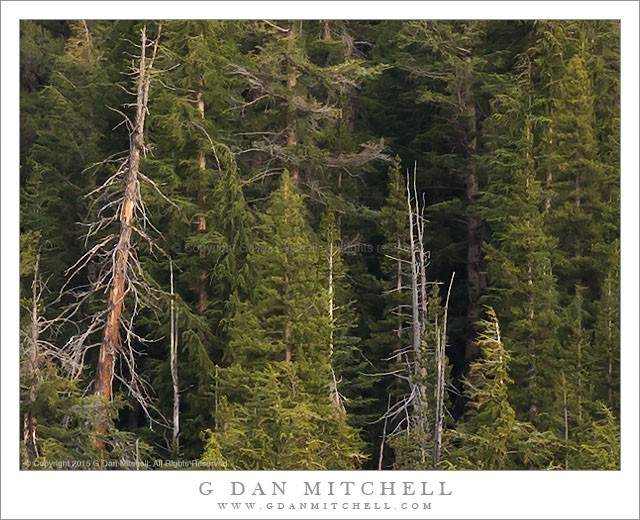
5Ds and 5Ds R Articles:
- The Canon EOS 5Ds R — Autofocus Torture Test
- The Canon EOS 5Ds R — Dynamic Range Examples
- The Canon EOS 5Ds R — A Resolution Example
- Canon 5DS R: A Printing Test
- Looking at Canon 5Ds RAW Files: Noise and Dynamic Range.
- Canon EOS 5Ds and 5Ds R Release Near?
- Canon 5Ds and 5Ds R Pre-orders Available
- Links to the Canon EOS 5Ds and the Canon EOS 5Ds R in this article go to site-sponsor B&H photography with whom I have an affiliate relationship. When you purchase through these links your price is the same, but a small percentage is returned to help support this website.
Mentioned in this article:
- EF 100-400mm f/4.5-5.6L IS II lens
- Canon EOS 5Ds DSRL (with anti-alias filtering)
- Canon EOS 5Ds R DSLR (without until-alias filtering)
© Copyright 2015 G Dan Mitchell – all rights reserved.
 G Dan Mitchell is a California photographer and visual opportunist. His book, “California’s Fall Color: A Photographer’s Guide to Autumn in the Sierra” is available from Heyday Books and Amazon.
G Dan Mitchell is a California photographer and visual opportunist. His book, “California’s Fall Color: A Photographer’s Guide to Autumn in the Sierra” is available from Heyday Books and Amazon.
Blog | About | Flickr | Twitter | Facebook | Google+ | 500px.com | LinkedIn | Email
All media © Copyright G Dan Mitchell and others as indicated. Any use requires advance permission from G Dan Mitchell.

